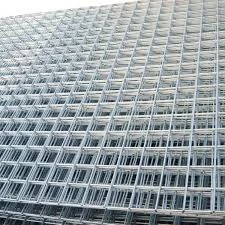11 月 . 01, 2024 14:22 Back to list
Understanding Hydraulic Hose Crimp Fittings for Efficient Fluid Power Systems
Understanding Hydraulic Hose Crimp Fittings
Hydraulic systems are pivotal in countless industries, powering everything from construction machinery to agricultural equipment. A crucial component of these systems is the hydraulic hose, which transports fluid under high pressure. To ensure reliable and leak-free connections, hydraulic hose crimp fittings play a vital role.
Crimp fittings are specifically designed to attach hoses to various components like pumps, cylinders, and valves. The fitting consists of a metal sleeve that tightly grips the hose and ensures a robust connection. The process of crimping involves compressing the sleeve around the hose with a specialized tool, creating a secure bond that can withstand demanding operating environments.
One of the key benefits of hydraulic hose crimp fittings is their ability to maintain a strong seal under pressure. Unlike traditional hose clamps, which can loosen over time, crimped connections are more durable and reliable. This is particularly important in hydraulic applications, where even minor leaks can lead to significant fluid loss and potentially hazardous situations.
When selecting crimp fittings, it is essential to consider compatibility with the specific hose type and size. Hydraulic hoses are classified based on their pressure ratings and applications, so choosing the right fitting matched to the hose's specifications is crucial. Using improper fittings can lead to failures, which may result in downtime and costly repairs.
hydraulic hose crimp fittings

Moreover, the materials used in crimp fittings significantly influence their performance. Common materials include steel and stainless steel, each offering different advantages. Steel fittings are generally more robust and less expensive, while stainless steel provides enhanced corrosion resistance, making it suitable for applications exposed to harsh environments.
Proper installation of crimp fittings is equally important. It requires specialized crimping tools to ensure consistent pressure and alignment. Inadequate crimping can compromise the integrity of the connection, potentially leading to leaks or failure during operation. Therefore, it is advisable to adhere to manufacturer guidelines and industry standards during installation.
Maintenance of hydraulic hose connections is also crucial for long-term reliability. Regular inspections can help identify wear, corrosion, or other issues before they become serious problems. If a fitting shows signs of damage or if leaks are detected, it is critical to replace the affected components immediately to avoid equipment failure.
In conclusion, hydraulic hose crimp fittings are integral components in fluid power systems, ensuring secure and durable connections. Their proper selection, installation, and maintenance can significantly impact the efficiency and safety of hydraulic machinery. As industries continue to evolve, understanding the importance of these fittings will remain essential for optimal system performance and reliability.
-
Secure Your Roof with Quality Roofing Nails
NewsNov.04,2024
-
Secure Your Property with Quality Field Fencing
NewsNov.04,2024
-
Enhance Your Space with Quality Mesh Fencing
NewsNov.04,2024
-
Discover the Versatility of Iron Wire for Your Projects
NewsNov.04,2024
-
Discover the Versatility of Common Nails for Your Projects
NewsNov.04,2024
-
Discover Quality Hydraulic Fittings for Your Applications
NewsNov.04,2024









